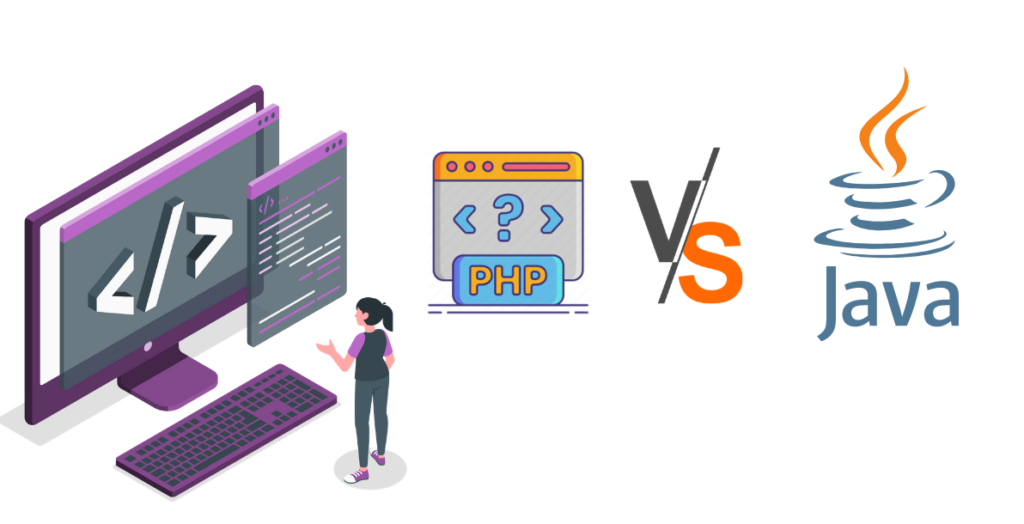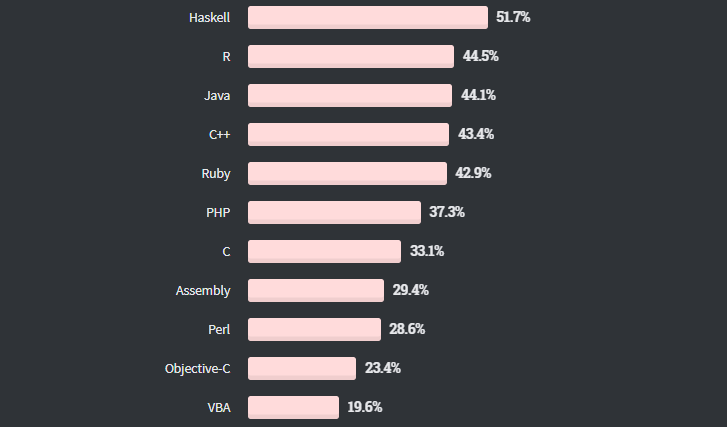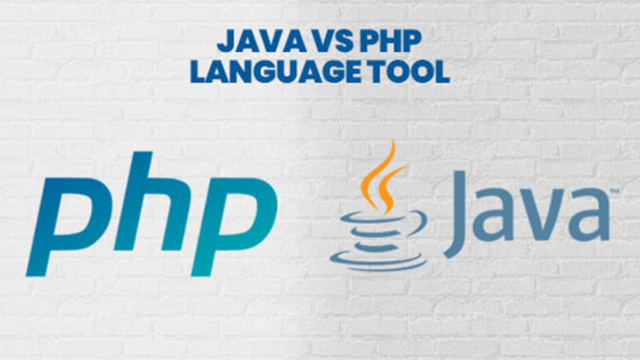What to choose – Java or PHP – is a pretty ‘religious’ question since whichever language is chosen for web development, it cannot but goes tight with the type of the project, its requirements, and resources the company has at hand.
Both introduced in 1995, Java and PHP are general-purpose, object-oriented programming languages, and still most demanding among developers. They both have gathered an impressive base of libraries, frameworks, tools, and APIs. Still, whenever it comes to web development, there’s a hot debate among developers.
Before choosing a programming language for web development, you have to factor in the following characteristics:
- availability, stability, and security,
- built-up reputation and top-ranking,
- ability to provide a comprehensive set of frameworks, libraries, APIs ready to tackle current web development app standards,
- community support.
Java vs PHP: Which is Best for Your Web App?

Let’s go deep to know better which programming language is the best choice for web development by comparing specific characteristics of both languages.
Contents
PHP is a widely acceptable open-source general-purpose server-side scripting language that can be embedded into HTML. According to the source, the number of websites written in PHP in 2020 is valued at 50,6%. Another statistic shows that the custom PHP development services market share rounded up to 39,24% as of October 2020. Such websites as Wikipedia, Facebook, WordPress, Canva, and more use PHP for the majority of the backend work. Yet, as Django, NodeJS, ASP.NET, and others are coming out, PHP has slightly decreased in its popularity.
With object orientation capabilities, Java has maintained its stronghold as the most used programming language for high-traffic and scalable websites surpassing ASP.NET, Ruby, and PHP. Java application development services are one of the pillars or additions for AliExpress, LinkedIn, eBay, Google, and others served in the web development language stack.

Most loved programming languages. Source: insights.stackoverflow.com
#2. Performance & Practical Implementation
When it comes to enterprise apps, performance, speed, and multithreading management are of paramount importance. Java application development beats others hands down. Java is the client-side programming language and has been heavily used for building enterprise-scale applications, hence there’s a myriad of mature frameworks such as Spring (and Spring Boot with microservices), Scala or Grails, the JSP, Java servlets, and other tools help to build a robust web app with powerful data structures rendered by Java Collections Framework.
Based on the WORA (Written Once Run Anywhere) concept, thus being versatile and ubiquitous, Java app development can be used for a variety of cases starting from single-page websites and small apps all the way through to huge high-traffic enterprise apps.
PHP, however, is a lightweight scripting language initially serving online businesses making websites and dynamic apps. Thanks to its new releases, diverse built-in features, databases, massive frameworks, and libraries, developers can speed up the code writing process and generally spend less effort. The code refactoring and DRY app development greatly affect the maintenance while MVC patterns assist in creating cleaner code. If there’s a need to build an app with fewer features, software development in PHP is the path to follow.
#3. Learning Curve
PHP is a straightforward and easy-to-attain programming language. Some developers claim you can learn PHP within a month. By comparison, to get Java essentials you’ll need at least three months and the learning curve might be quite steep. However, Java renders syntactic consistency. Coupled with the frameworks and its features, Java makes custom web application development a breeze. If you’re familiar with C or C++, you will learn Java without a hurdle.
#4. Security
As cloud computing keeps on spreading and malware attacks are still a pressing concern, data security is more than ever relevant. Over years, Java has attained a reputation as a robust and stable programming language with cross-platform accessibility thanks to JVM and in-built security tools. On the other hand, building a PHP web application, developers have to use external frameworks to make the platform secure.
In the case of Java app development, it’s better to get dedicated hosting whereas PHP-based apps can make the use of a shared one.
#5. Community
With 7.6 million active Java developers and over 5 million of that of PHP worldwide, twenty-five years is not simply a number, but a prolonged period of dedicated work, contribution, developers’ support, and trust. Both Java and PHP have strong, ever-evolving communities that help them perfect and set new code standards.
Key Differences Between Java and PHP
| General Comparison | Java | PHP |
| Intended use | Application, business, general, client-side, mobile development, web, server-side | Web application, server-side, web |
| Imperative | Yes | Yes |
| Object-oriented | Yes | Yes |
| Functional | Yes | Yes |
| Procedural | Yes | Yes |
| Generic | Yes | |
| Reflective | Yes | Yes |
| Event-driven | Yes | |
| Other paradigms | concurrent | |
| Standardization | De facto standard via Java Language Specification | De facto standard via language specification and RFCs (Requests for Comments) |
Source: Wikipedia
It’s hard to give credit to one web development language or tool, especially when it comes to a complex web application development. The latter, however, have been and can be built in both Java and PHP.
PHP web development is ahead in the race, factoring that it’s cheaper and provides more resources. It ensures less memory footprint and hot patches without the downtime, and receives massive community support as well. Also, there’s a so-called ‘Java-PHP bridge’ to benefit from both environments.
Having lots of predefined frameworks and packages, Java is a top-player in enterprise app development like e-commerce, banking, machine learning, big data, and other sectors. More recently, many companies are migrating to Java as it helps to get a high-level security and software quality.
Bear in mind that software is a means to an end and choose whatever feels suitable for your project.


